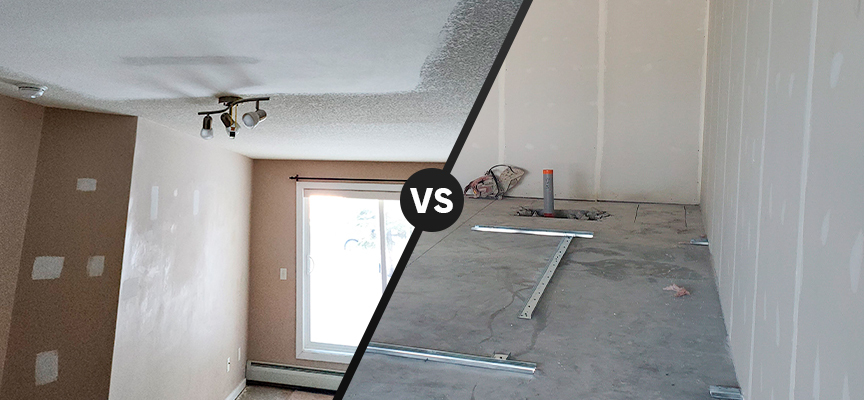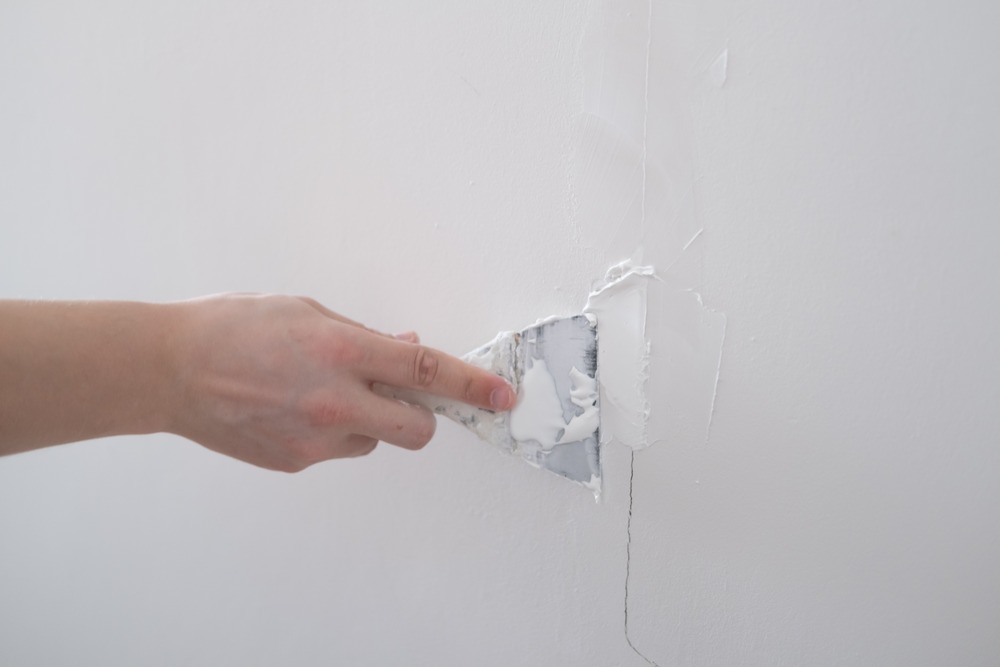Step-by-Step Approaches to Getting Flawless Drywall Repair Work and Installment
Attaining remarkable drywall repair service and installation needs an organized strategy. It entails understanding the different types of drywall and the tools required for the job. Correct location prep work is important prior to starting any work. Interior Painting. Each step, from covering openings to installing new sheets, needs interest to detail. The procedure doesn't end with setup; finishing strategies are important for a sleek look. The following actions will assure a seamless result, yet exactly what do they involve?
Recognizing Drywall Kind and Devices Needed

The installment tools are equally essential. An energy blade is vital for cutting drywall sheets, while a drywall saw can help in making precise cuts for electrical outlets or fixtures. T-squares guarantee precise measurements, and drywall screws or nails protect the panels to wall surface studs. Additionally, a drywall lift can facilitate the installation of huge sheets, reducing physical stress. Familiarity with these devices and kinds considerably adds to the effectiveness and high quality of drywall projects.
Preparing the Area for Repair Work or Setup
Preparing the location for drywall fixing or installation is vital to ensure a smooth and effective procedure. Initially, the surrounding area ought to be free from furnishings and various other challenges to give sufficient functioning area. This not just assures safety and security however additionally protects against damage to personal belongings. Next, it is crucial to cover the floor with decrease fabrics to catch any type of particles or dirt generated during the work.
Additionally, the wall surfaces ought to be inspected for any type of loose paint or wallpaper that may hinder adhesion. Getting rid of these elements creates a clean surface for the brand-new drywall. Prior to beginning, it is a good idea to shut off power to electric outlets or fixtures around. Making certain ample illumination in the workspace will certainly further boost presence and focus during the repair or setup procedure. drywall contractor. By thoroughly preparing the location, one lays the groundwork for a successful drywall job
Step-by-Step Refine for Patching Holes
:strip_icc()/how-to-patch-drywall-gray-wall-aadf75af0f5d4ec19704a770bd84efc2.jpg)
Patching holes in drywall needs a systematic technique to ensure a seamless repair service. The very first step includes assessing the dimension of the opening. For small openings, a patching compound may be enough, while larger openings require a patch. Next, the broken location must be cleansed and prepared by getting rid of any type of loose debris.
For little openings, using spackling compound with a putty blade is suggested, smoothing it over the opening and feathering the sides. As soon as completely dry, fining sand the location guarantees a smooth coating. For larger holes, a drywall patch must be cut to size, placed over the hole, and protected with screws. After setting up the patch, the exact same spackling process is repeated, complied with by sanding.
The patched location has to be primed and painted to match the surrounding wall. This careful process guarantees an expert appearance and prolongs the life-span of the repair service.
Installing New Drywall Sheets: A Comprehensive Overview
Installing brand-new drywall sheets calls for careful preparation and implementation to guarantee a aesthetically attractive and sturdy surface. Initially, the area has to be determined precisely to figure out the number of sheets needed. It is important to select the appropriate density, typically 1/2-inch for interior walls and 5/8-inch for ceilings or fire-rated applications.
Next off, the studs or structure should be checked for any irregularities, seeing to it they are straightened and properly spaced. When placing the drywall sheets, they must be positioned horizontally to decrease seams and improve architectural honesty. A drywall lift can be helpful for above setups.
Securing the sheets with drywall screws at appropriate periods makes sure a secure installment. It is very important to countersink the screws a little below the surface to get ready for the ending up procedure. Following these standards will lead to a solid foundation, all set for the next actions in drywall completing.
Ending Up Touches: Insulation, Mudding, and Sanding Methods
When the drywall sheets are safely fastened, the emphasis moves to the complements that will certainly supply a refined appearance. This procedure starts with taping, utilizing either paper or fiberglass harmonize tape to cover the seams in between sheets. The tape assures a smooth change, reducing the threat of breaking. Complying with taping, mudding is important; a joint compound is used over the tape to load gaps and produce a seamless surface. Normally, multiple coats are essential, each one feathered out even more than the previous to minimize exposure.
After adequate drying time, fining sand is the last action in attaining a perfect coating. A fine-grit sandpaper is utilized to smooth the dried substance, guaranteeing there are no bumps or flaws. Interest to detail throughout this stage is substantial, as it greatly impacts the overall look of the wall. The end result need to be an even, professional-looking surface area prepared for priming and paint.
Often Asked Inquiries
How Do I Choose the Right Drywall Thickness for My Job?
To choose the ideal drywall density, think about the project's purpose, area, and architectural demands. Criterion densities consist of 1/2-inch more info for basic usage and 5/8-inch for fire-rated applications, guaranteeing longevity and compliance with building regulations.

Can I Mount Drywall Over Existing Drywall?
Yes, mounting drywall over existing drywall is possible. Nonetheless, it is crucial to guarantee the underlying surface area is free and safe from damages. Correct fastening and consideration of density are necessary for a successful setup.
What Are the Ideal Practices for Drywall Disposal?
The ideal practices for drywall disposal include reusing when feasible, making use of neighborhood waste monitoring services, and following guidelines for hazardous products if appropriate. Interior Painting. Effectively securing and classifying waste guarantees compliance and security throughout disposal
How much time Should I Await Mud to Dry Before Fining sand?
Normally, one should wait 24 hr for drywall mud to dry prior to sanding. Drying time can vary based on moisture and temperature level, so inspecting for a company texture is advisable prior to continuing.
Are There Eco-Friendly Drywall Options Available?
Yes, environmentally friendly drywall alternatives are available. These choices often utilize recycled materials, low-VOC adhesives, and sustainable production methods, minimizing ecological influence while giving effective insulation and sturdiness for various construction and improvement projects.
An utility blade is essential for reducing drywall sheets, while a drywall saw can aid in making exact cuts for outlets or components. Preparing the area for drywall fixing or setup is crucial to assure a efficient and smooth process. Patching openings in drywall requires a systematic method to ensure a smooth repair work. Mounting new drywall sheets needs mindful planning and execution to ensure a durable and aesthetically attractive coating. Yes, setting up drywall over existing drywall is feasible.